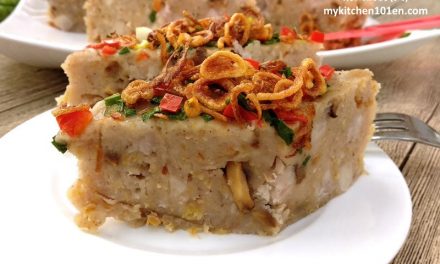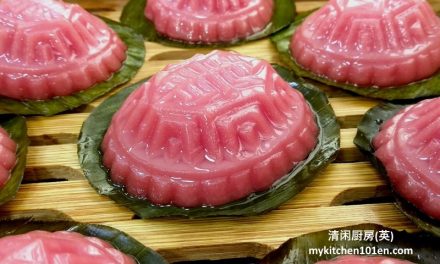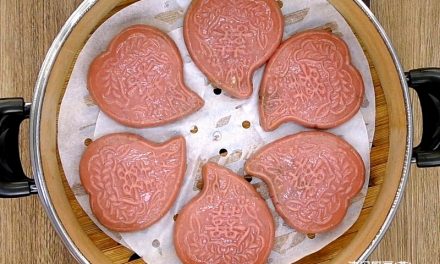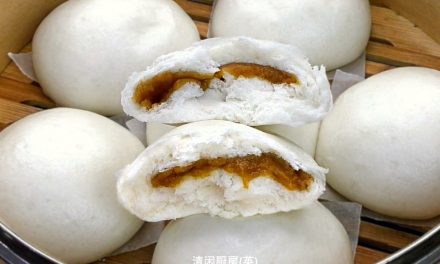Pandan is a tropical plant native to Southeast Asia. The pandan leaves are used to give food its distinctive fragrance. Pandan juice or pandan extract is commonly used in many Southeast Asian desserts for its distinctive fragrance.
Where can I find pandan leaves?
Pandan leaves can be easily grown in tropical climates in shaded places and growing them at your home can be very handy if you’re an avid Pandan dessert lover.
Pandan leaves can be found in most Asian food stores or online. They are typically sold whole fresh in Southeast Asia or frozen pre-sliced for non-native countries.
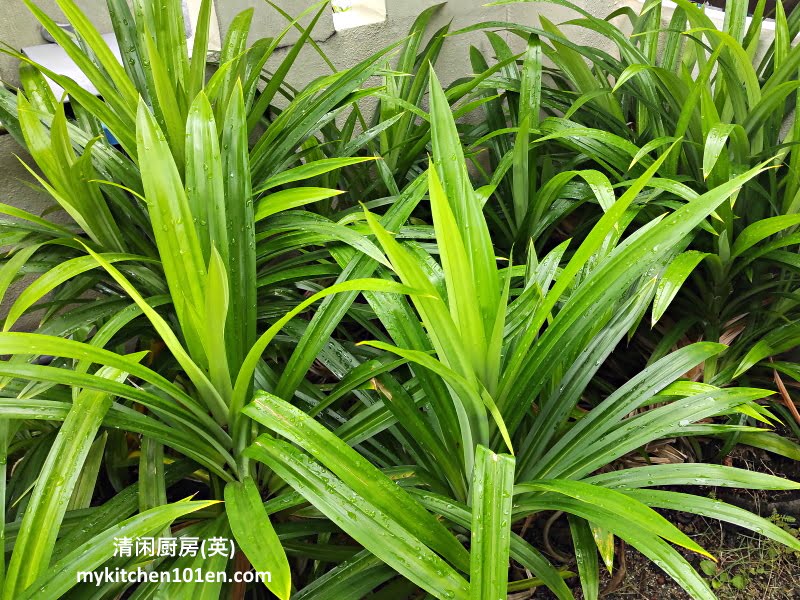
Can you eat pandan and what does pandan taste like?
The leaves of the pandan plant are seldom consumed on its own, the juice extracted is also bitter and not for drinking. The best way to use pandan is to add them to recipes as natural flavouring and colouring rather than eating them alone. In short, pandan leaves are only used in cooking and not for normal consumption.
Pandan is sometimes referred as “Asian vanilla”. Pandan leaves are usually used in sweet soup dessert recipes or cooking rice such as Nasi Lemak (Coconut Milk Rice) to give the food a nice fragrance. If you are using it for the fragrance, both young or old pandan leaves are fine.
For making cakes, bread, pao/mantou, desserts, etc., pandan juice is used. Pick leaves that are dark green (older leaves) to get better colour if you are using pandan juice as natural colouring. The concentration of pandan juice needed for different recipes might vary, you need to adjust it accordingly as the end product will have bitter taste if you added too much thick pandan juice in a recipe.
CHINESE VERSION: 如何从香兰叶取出香兰汁 / 香兰精华
[ads1]
HOW TO EXTRACT PANDAN JUICE / EASY PANDAN EXTRACT | MYKITCHEN101EN
Yields: about 250 g pandan juice/about 25 g pandan extract
Ingredients:
- 100 g pandan leaves
- 250 g plain water
Instructions:
1 Wash pandan leaves on both sides thoroughly. (Reminder: Pandan leaves grow on land and may carry dirt.)
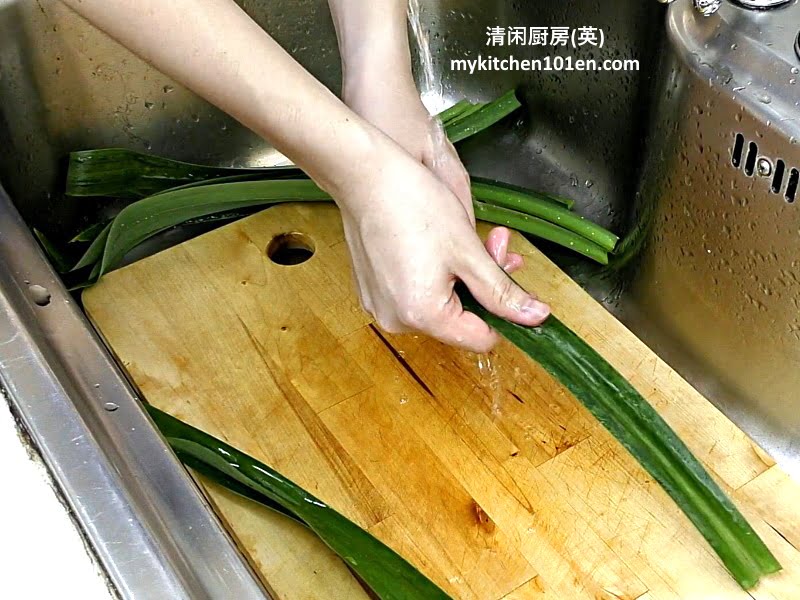
[ads1]
2 Cut pandan leaves into small pieces (about 1 inch), use only the darker part of leaves if you want deeper colour pandan juice.
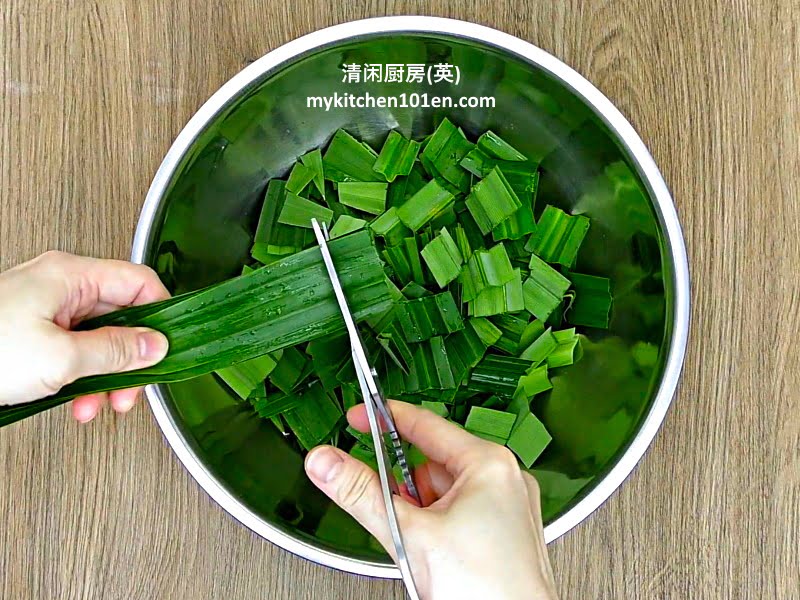
3 Add 1 cup (about 250 g) of water into a blender, then add in pandan leaves in 3 batches, blend until fine (it will be more difficult to blend if you add in all the pandan leaves at the same time). (Reminder: This recipe yields a quite thick pandan juice, the ratio of pandan to water is just a general guideline. For different recipes, the concentration of pandan juice needed might vary, thus the ratio of pandan to water will vary too based on the recipe, the food will have bitter taste if you added too much pandan juice.)
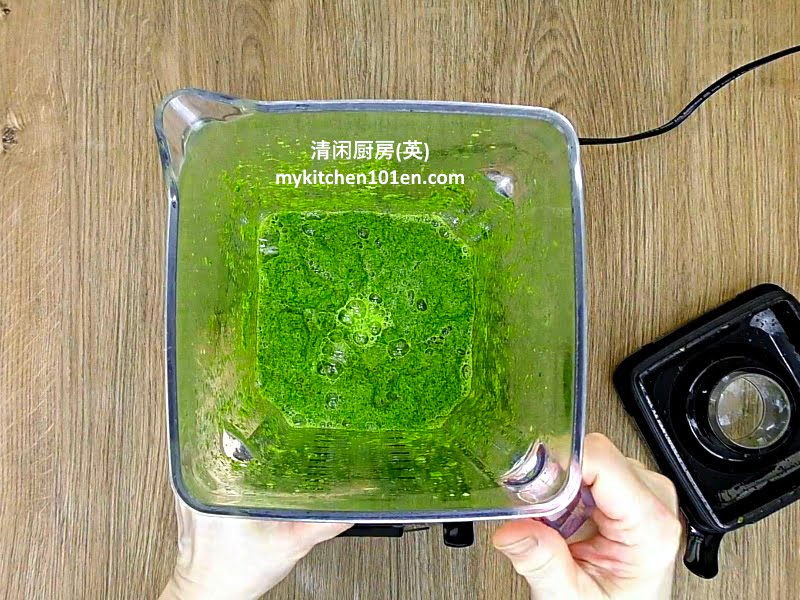
[ads1]
4 Filter the liquid using a strainer or a cheesecloth to squeeze the juice out, the pandan juice is ready to be used.
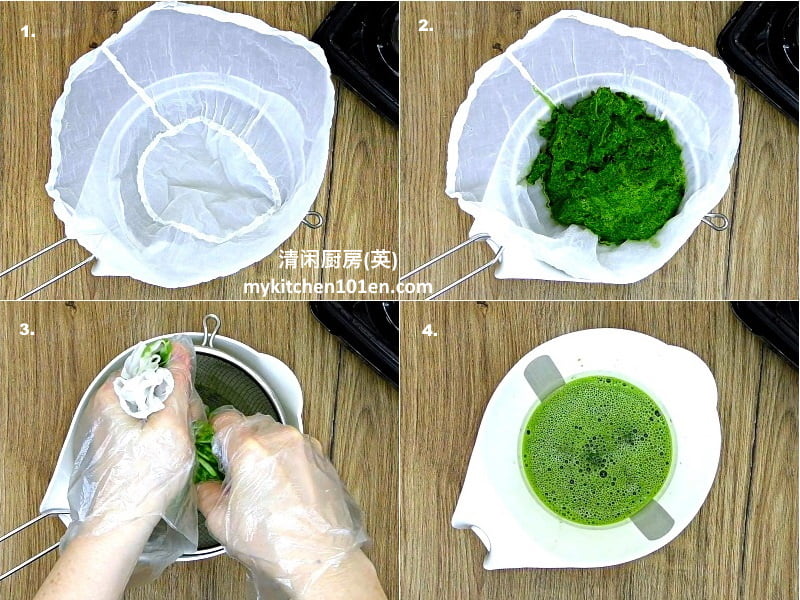
5 To get Pandan Extract, transfer pandan juice to a bottle, keep refrigerated for 2 days to let the pandan extract settles to the bottom. Discard the water on the top after 2 days.
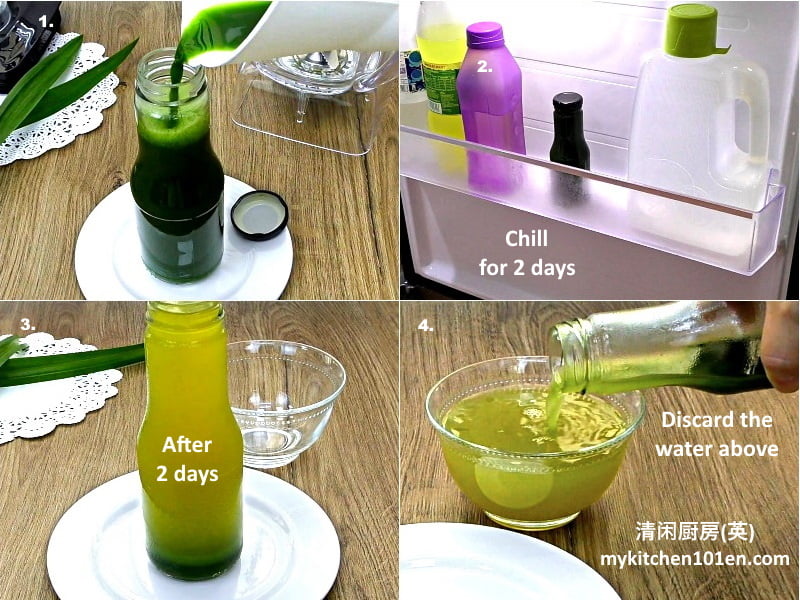
6 It yields about 25 g of Pandan Extract. (Notes: I had tried freezing the pandan extract using ice-cube tray. Frozen pandan extract when become small pieces after melting. Add 1 piece of pandan extract in a little bit of water, stir until melted, then sieve again using a cloth to break down the pandan extract pieces to get pandan juice.)
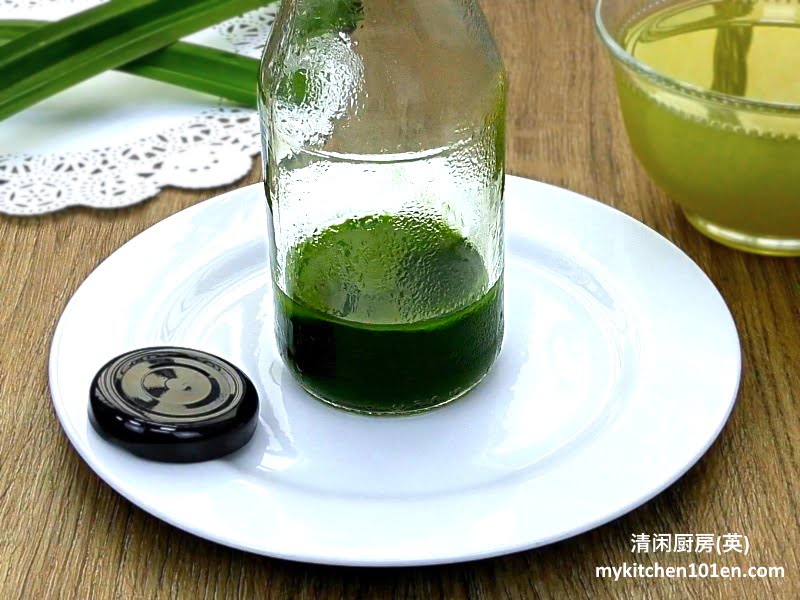
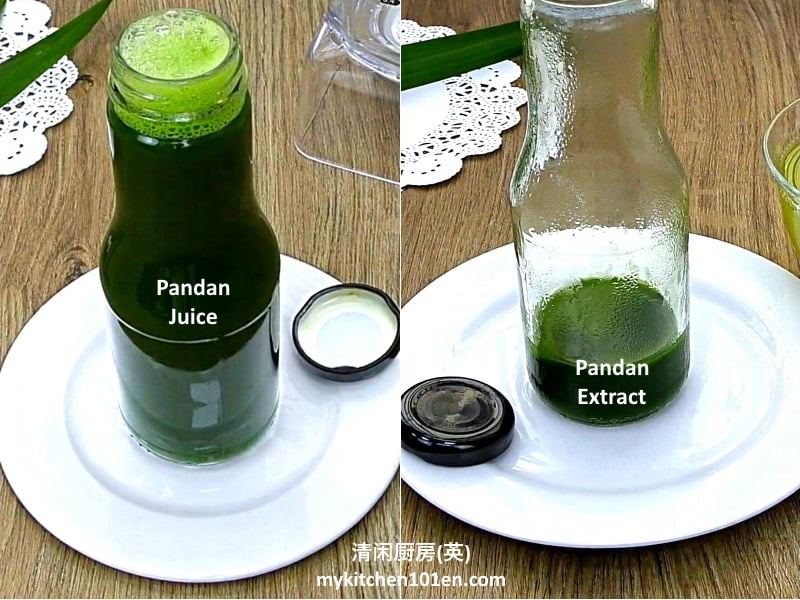
How To Extract Pandan Juice / Easy Pandan Extract
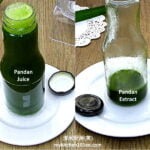
Pandan leaves are used to give food its distinctive fragrance. Pandan juice or pandan extract is commonly used in many Southeast Asian desserts for its distinctive fragrance.
- blender
- 100 g pandan leaves
- 250 g plain water
Wash pandan leaves on both sides thoroughly. (Reminder: Pandan leaves grow on land and may carry dirt.)
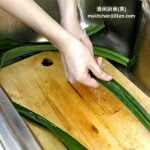
Cut pandan leaves into small pieces (about 1 inch), use only the darker part of leaves if you want deeper colour pandan juice.
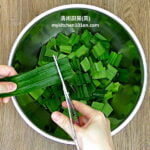
Add 1 cup (about 250 g) of water into a blender, then add in pandan leaves in 3 batches, blend until smooth (it will be more difficult to blend if you add in all the pandan leaves at the same time).

Filter the liquid using a strainer or a cheesecloth to squeeze the juice out, the pandan juice is ready to be used.
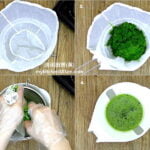
To get Pandan Extract, transfer pandan juice to a bottle, keep refrigerated for 2 days to let the pandan extract settles to the bottom. Discard the water on the top after 2 days.
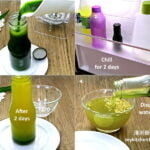
It yields about 25 g of Pandan Extract.
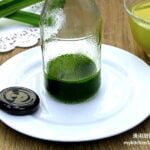
Yields: about 250 g pandan juice or about 25 g pandan extract
This recipe yields a quite thick pandan juice, the ratio of pandan to water is just a general guideline. For different recipes, the concentration of pandan juice needed might vary, thus the ratio of pandan to water will vary too based on the recipe, the food will have bitter taste if you added too much pandan juice.

